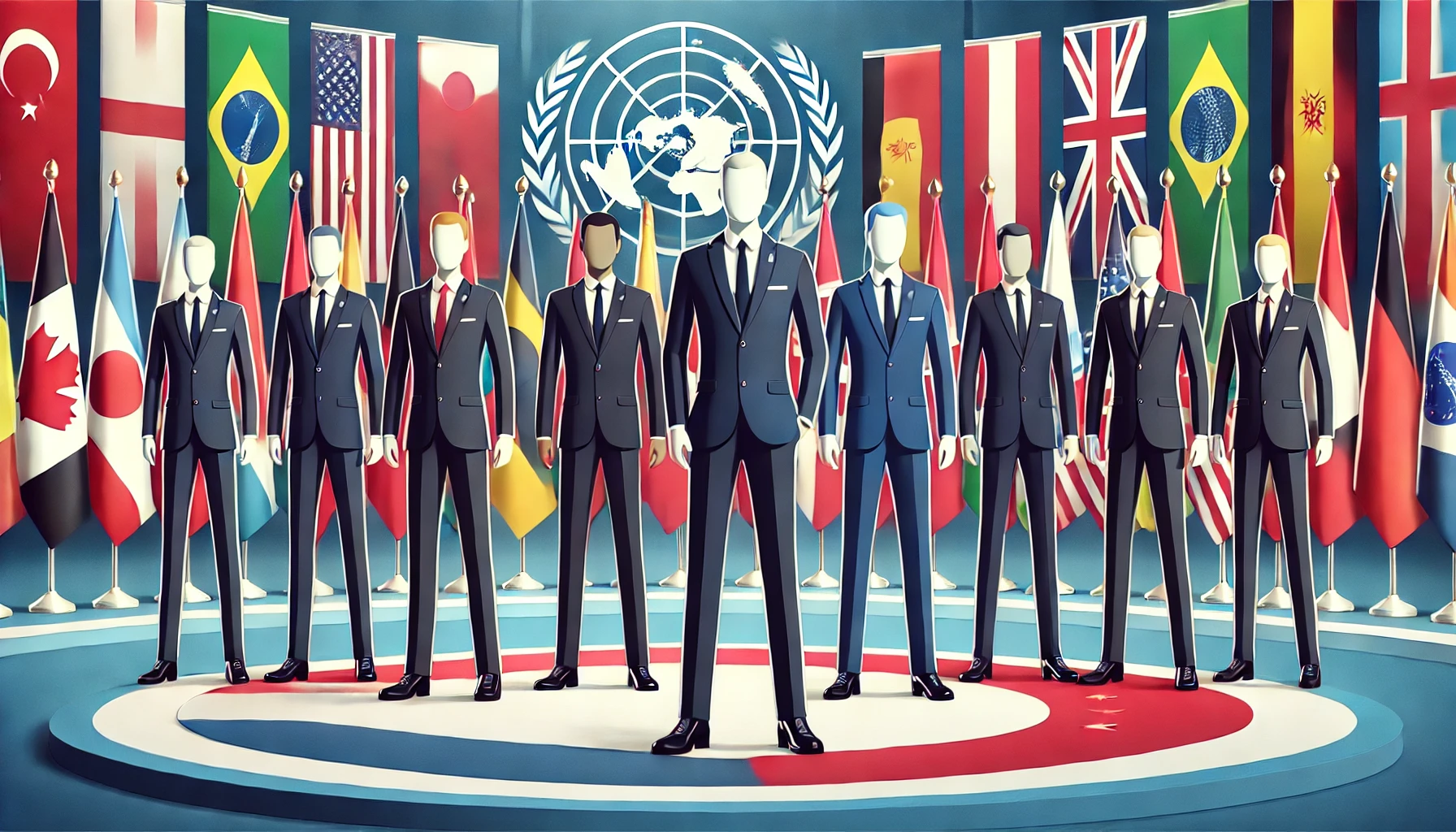

IPTV Desk How Global Leaders Reacted to Trump’s Trade Policies .The future of U.S. trade wars and economy after 2025 is marked by a notable slowdown in growth, with projections falling to 2.2% in 2025 and just 1.3% in 2026. One of the major factors contributing to this trend is the lingering impact of trade wars—especially the U.S.-China trade war that began in 2018. Through a series of imposed tariffs, countermeasures, and shifting global alliances, the conflict not only strained U.S.-China relations but also reshaped trade flows, disrupted supply chains, and triggered strategic economic realignments across Europe and Asia. The future of U.S. trade hinges on how effectively the country adapts to this new global order.
This article dives into how different countries repaired their trade losses, identifies the winners and losers in this evolving global landscape, and evaluates the long-term consequences for the United States. The future of U.S. trade will depend heavily on the success of these new strategies.
How Global Leaders Reacted to Trump’s Trade Policies
European Reactions
1. Germany: Chancellor Angela Merkel Merkel described U.S. tariffs on steel and aluminum as “illegal under WTO rules” and emphasized the importance of “a united European response.” Germany leaned on the EU’s collective bargaining power to push back against U.S. measures.
2. France: President Emmanuel Macron Macron criticized the trade war tactics as “economic nationalism” and a threat to global stability. He worked closely with other EU leaders to push for a multilateral solution, supporting WTO reforms.
3. United Kingdom: PM Theresa May/Boris Johnson May took a cautious stance, avoiding escalation while maintaining close U.S. ties. Boris Johnson, post-Brexit, used the moment to pivot toward bilateral trade deals with the U.S. and other non-EU countries.
4. European Commission: Jean-Claude Juncker Juncker warned that the EU would respond with “countermeasures” to any U.S. tariffs and initiated formal complaints with the WTO. He also visited Washington to negotiate trade de-escalation.
Asian Reactions
5. China: President Xi Jinping Xi denounced the tariffs as “economic bullying” and responded with retaliatory tariffs on U.S. agricultural and energy products. He emphasized China’s shift toward self-reliance and signed the RCEP trade agreement with Asia-Pacific nations.
6. Japan: Prime Minister Shinzo Abe Abe pursued quiet diplomacy, trying to exempt Japan from tariffs while advancing multilateral agreements like the CPTPP. He emphasized stability and supply chain diversification.
7. India: Prime Minister Narendra Modi Modi viewed the trade war as an opportunity to attract manufacturing relocating from China. India increased tariffs on some U.S. goods in retaliation but also sought deeper strategic ties with the U.S.
8. South Korea: President Moon Jae-in Moon expressed concern about the disruption of global trade and emphasized the need for stable U.S.-Korea trade ties. South Korea negotiated its way out of some steel tariffs and reaffirmed its economic ties with both China and the U.S.
9. Vietnam: Government Spokesperson and MOIT Vietnam’s Ministry of Industry and Trade issued statements promoting Vietnam as an alternative supply hub. While avoiding direct confrontation, the country capitalized on diverted manufacturing and export opportunities.
10. Australia: PM Scott Morrison Morrison voiced support for free and open trade while cautioning against escalating economic nationalism. Australia deepened its engagement in Indo-Pacific trade partnerships to hedge against global volatility.
The Trump administration’s trade policies caused a wave of global economic recalibration. Leaders across Europe and Asia responded with a mix of resistance, diplomacy, and strategy to protect their national interests. These responses continue to influence global trade structures today and remain critical to understanding the future of U.S. trade relations.
How U.S. Trade Wars Reshaped Global Trade:
Impact on the United States: Losses and Gains
Losses
- Higher Consumer Prices
- Tariffs increased costs on goods like electronics, machinery, clothing, and furniture.
- These costs were passed on to consumers, contributing to inflation.
- Agricultural Sector Setbacks
- China was a major buyer of U.S. soybeans, pork, and corn.
- Exports plummeted; over $28 billion in subsidies were issued to aid farmers.
- Manufacturing Costs Rose
- Tariffs on Chinese components raised costs in automotive, electronics, and construction.
- Lost Global Market Share
- Other nations captured markets lost by U.S. exporters.
- Supply Chain Disruptions
- U.S. manufacturers dependent on Chinese inputs faced bottlenecks and delays.
Gains
- Push for Domestic Manufacturing
- Some companies began reshoring production.
- Investment rose in semiconductors, pharmaceuticals, and defense sectors.
- New Trade Agreements
- USMCA signed with Canada and Mexico.
- Strengthened deals with Japan, South Korea, and the UK.
- Phase One Trade Deal with China
- China agreed to buy $200 billion in U.S. goods and services over two years (partially fulfilled).
- Strengthened Alliances
- Reinforced ties with India, Japan, and Australia to counter China’s influence.
Other Hidden Impacts of the Trade War
- Developing Countries’ Role: Many nations like Bangladesh, Ethiopia, and Nigeria shifted their trade approach to benefit from realignments.
- Small Business Pressures: SMEs globally faced price volatility, disrupted logistics, and supply chain uncertainties.
- Currency Volatility: The yuan’s devaluation and reactions from global central banks introduced forex instability.
- Shadow Supply Chains: Businesses routed goods through third countries (e.g., Vietnam) to avoid tariffs.
- Semiconductor Disruptions: U.S. export bans and China’s chip-building response launched a tech arms race.
- Climate Tech Setbacks: Clean energy projects (solar, EVs) slowed due to tariffs on key Chinese components.
- Rise of Economic Nationalism: India, Brazil, and Turkey adopted protectionist policies inspired by U.S. strategies.
Winners and Losers: A Global Snapshot
| Country | Strategy | Impact |
|---|---|---|
| China | Diversified imports, RCEP, domestic boost | Mitigated losses, gained ties |
| Germany | EU-China trade, intra-EU focus | Moderate impact |
| France | Luxury/agri exports growth | Benefited from shifts |
| India | Self-reliance, supply chain relocation | Mixed success |
| Vietnam | Gained supply chains, FTAs | Big winner |
| South Korea | Trade diversification | Positive outcome |
| Japan | Factory relocation, RCEP | Stable and strategic |
| UK | Bilateral deals, finance/tech push | Strategic repositioning |
| Brazil | Agricultural exports to China | Strong trade surplus |
| Australia | Indo-Pacific trade focus | Resilient and proactive |
| Canada | Balanced NAFTA/global trade | Stable with diversification |
| USA | Mixed outcomes | Inflation, losses, new deals |
| African Nations | AfCFTA, China/EU ties | Long-term potential gains |
| Latin America | Asia-Pacific outreach, FTAs | Improved diversification |
Trade Wars as Global Game-Changers
While the U.S.-China trade war aimed to correct imbalances, it triggered a global reshuffling of trade strategies. Countries like Vietnam and Brazil emerged as winners by seizing new opportunities, while traditional powers like Germany and Japan adapted smartly. For the U.S., the outcome was mixed—with economic pain for consumers and farmers, but potential long-term gains through new trade partnerships and strategic shifts. All of these contribute to defining the future of U.S. trade on the world stage.
Future Steps and Potential Impact
Moving forward, the United States is likely to continue focusing on strengthening its domestic manufacturing sector, reducing over-dependence on Chinese imports, and building strategic trade partnerships with allies in Asia and Europe. The future of U.S. trade will also depend on technological investments and legal reforms. Initiatives like the CHIPS and Science Act and investments in clean energy and infrastructure are designed to future-proof the American economy. However, geopolitical tensions, especially in the Indo-Pacific region, may keep trade risks high. If managed wisely, the U.S. can turn short-term trade losses into long-term gains through innovation, policy reform, and diversified alliances.
In an interconnected world, trade wars rarely have clear winners. The smarter the strategy, the smoother the recovery. The global chessboard has been rearranged—and the next moves are already underway. The future of U.S. trade is being written in real time, with every diplomatic move and economic decision shaping what comes next.
How Global Leaders Reacted to Trump’s Trade Policies: Turning Points in Global Alliances
How Global Leaders Reacted to Trump’s Trade Policies: A Call for Multilateralism
How Global Leaders Reacted to Trump’s Trade Policies: Diplomatic ShockwavesTrump’s Trade Policies 2025
Why Do Americans Struggle to Find the Best Online Shopping Sites?



